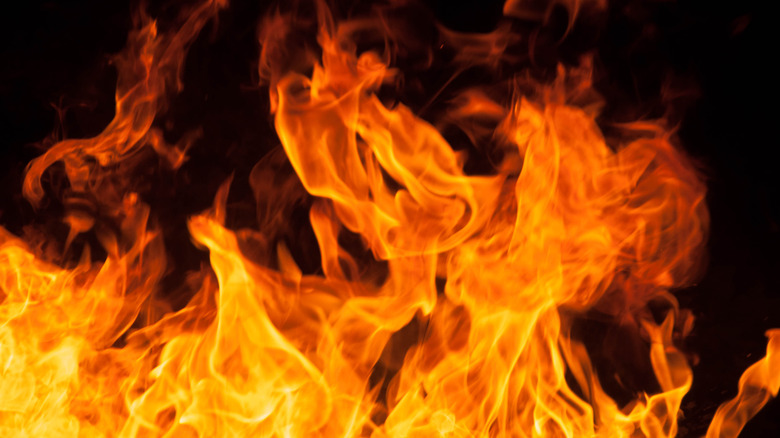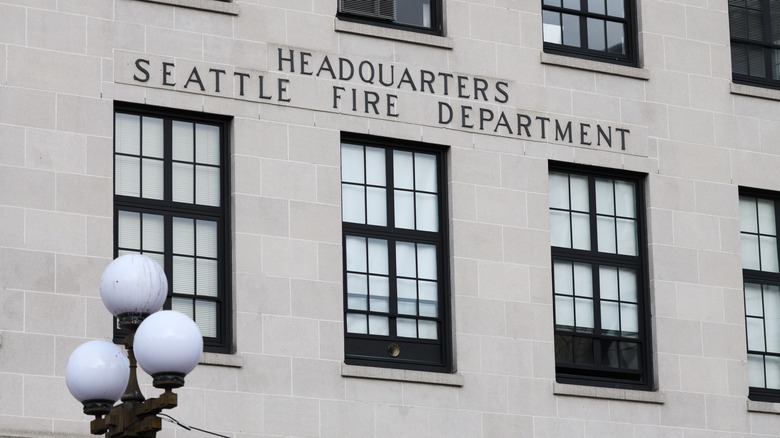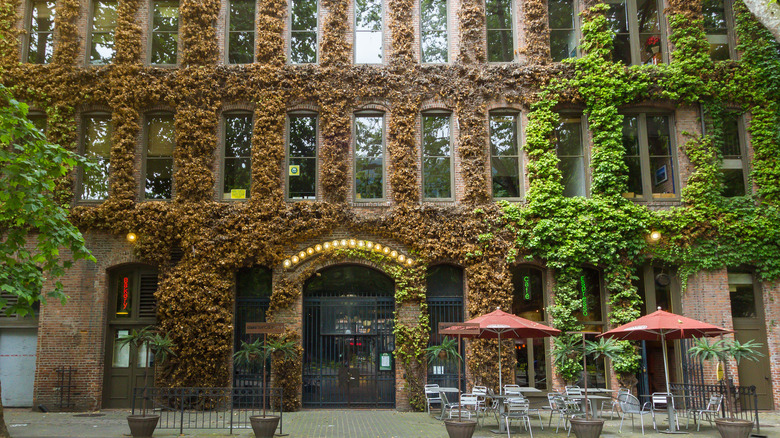The Surprising Truth Behind How Seattle Got Rid Of Its Rat Infestation
Rarely is the phrase "burn it all to the ground" effective in city planning or pest removal. Surprisingly, the great Seattle fire of 1889 accomplished both. The late 1800s saw a number of large fires in U.S. cities such as Chicago, Boston, and Spokane. Common issues included flammable building materials and designs that put buildings in close proximity to each other, making dense cities easy kindling. Once a fire ignited, many U.S. cities didn't have quick access to water, making containment difficult (per 1889). Oddly, Seattle's fire had a rejuvenating effect, spurring the town's transition from a shoddy coal and logging settlement to an urban port with infrastructure to support a booming population.
Pre-fire living conditions were less than ideal. The city lacked proper sewage systems, dumping the city's waste into the tidal flats that make up today's waterfront (via KUOW). High tides regularly flooded the city, built so close to the mucky shore, forcing residents to use specially-made toilets that often stopped working and overflowed. It was said you could smell the city before you saw it (per The Washington Post).
Furthermore, the city had a pest problem. Over 1 million rats scurried through the business district — now Pioneer Square — along with fleas and ticks (via 1889 and History Link). Overnight, Seattle's fatality-free fire provided the city with a clean slate, consuming the rats and the slapdash wooden buildings alike. In response, residents quickly banded together to lay the foundation for a new modern city (per 1889).
Igniting Change
A little after 2:15 p.m., on June 6, 1889, John Back, a woodworking assistant, needed glue. He tossed small chunks of solid glue into a gluepot to melt, placing the pot on a gasoline fire (via University of Washington and 1889). Accounts vary as to how the fire began, but most agree that Back's gluepot ignited and liquid flames spilled onto the floor that was covered in wood chips and turpentine — a highly flammable combination. Sources agree that Back tried to douse the fire in water, but only helped spread the flaming liquid. Luckily, the Pontius Building located on the corner of Front Street (now First Avenue) and Madison was safely evacuated (per History Link). Firefighters arrived at 2:45 p.m., but during that time, the fire spread.
That spring, exceptionally pleasant weather had provided a welcome relief for residents of the notoriously soggy and gray Pacific Northwest. However, dry conditions, sunny days, and temperatures in the 70s had turned the city's wooden structures into a tinderbox (via University of Washington). Buildings at the time were connected by a network of basements. The fire easily slipped underground from building to building, confounding relief efforts that could not identify the fire's source through the smoke (per 1889). To make matters worse, the fire's first few stops were a liquor store and two saloons. The alcohol within each establishment only strengthened the blaze. Water collection issues, spurred by a low tide, made containing the fire nearly impossible (via University of Washington).
A city burned, a city reborn
By 3 a.m. the inferno had destroyed 25 city blocks (120 acres), leveling Union to Jackson Street (via University of Washington). The British author Rudyard Kipling visited the area a few weeks later and described the devastation: "In the heart of the business quarters there was a horrible black smudge, as though a Hand had come down and rubbed the place smooth. I know now what being wiped out means" (per History Link). The flames took the buildings as well as the rats.
Yet enthusiasm to rebuild replaced the firefighting effort's momentum. Possibly because so many were unhoused, they had no choice but to quickly find a solution (per History Link). At 11 a.m. the next day, roughly 600 business people met to hatch a plan (via University of Washington). Businesses restarted almost immediately, operating out of tents at first. Within a year, 465 buildings had been rebuilt.
Improvement efforts included stricter fire safety measures and a city-run fire department and water utilities. In construction, bricks replaced wood. To combat the high tides, buildings' streets were raised almost 22 feet, meaning that many buildings' second stories were now ground level (per University of Washington). Soon the abandoned underground levels became havens for illegal activities. In 1907, a typhoid scare completely sealed the subterranean city, preserving the abandoned stories for nearly 50 years, until they were unearthed for tourism (via History Link). The city's critters shared the resilient spirit. In 2018 Seattle was named one of the most rat-infested cities in the U.S. (per Seattle Magazine).


